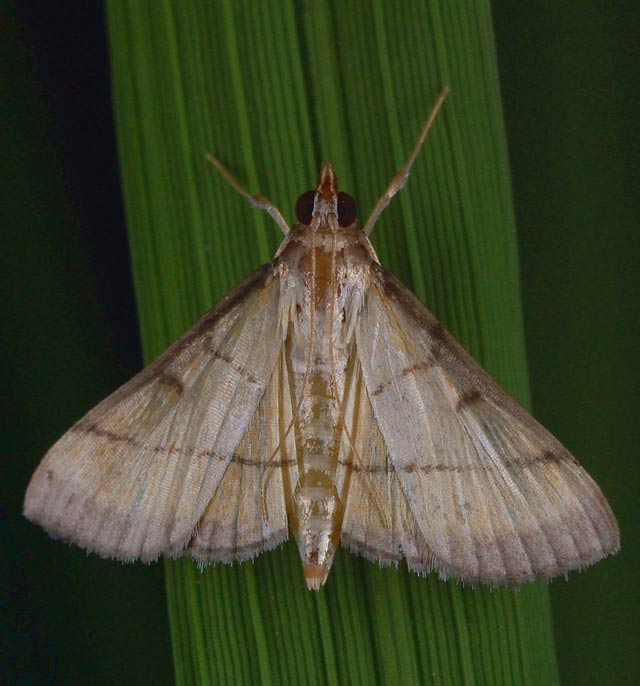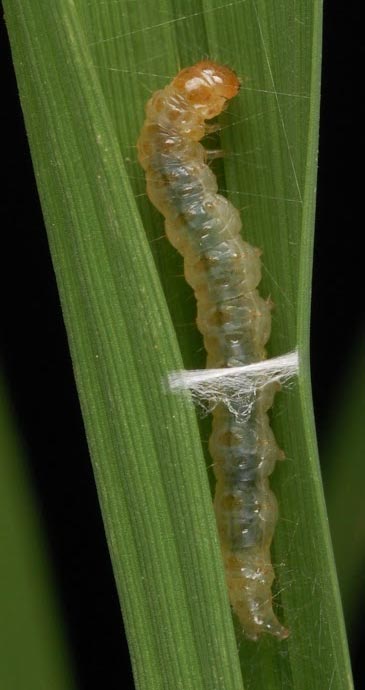Rice leaffolder
Cnaphalocrocis medinalis
 What it does
What it does
Leaffolder caterpillars fold a rice leaf around themselves and attach the leaf margins together with silk strands.
They feed inside the folded leaf creating longitudinal white and transparent streaks on the blade.
Why and where it occurs
Heavy use of fertilizer encourages rapid multiplication of the insect. High humidity and shady areas of the field, as well as the presence of grassy weeds from rice fields and surrounding borders favor the development of the pest.
Expanded rice areas with irrigation systems, multiple rice cropping and insecticide induced resurgences are important factors in the insect’s abundance.
Rice leaffolders occur in all rice environments and are more abundant during the rainy seasons. They are commonly found in shady areas and areas where rice is heavily fertilized. In tropical rice areas, they are active year-round, whereas in temperate countries they are active from May to October. The adults are nocturnal and during the day, they stay under shade to escape predation. Moths fly short distances when disturbed.
How to identify
Check the plant for the following symptoms:
- longitudinal and transparent whitish streaks on damaged leaves
- tubular folded leaves
- leaf tips sometimes fastened to the basal part of leaf
- heavily infested fields appear scorched with many folded leaves
Also check for presence of insects, particularly during tillering to flowering. Signs include:
- disc-shaped ovoid eggs laid singly,
- young larvae feeding on the base of the youngest unopened leaves,
- folded leaves enclosing the feeding larvae, and
- present fecal matter.
Why is it important
The damage caused by leaffolders may be important when it affects more than half of the flag leaf and the next two youngest leaves in each tiller.
At vegetative phase, crops can generally recover from damage; but when leaffolders infest at reproductive phase, the damage can be economically important. High feeding damage on the flag leaves can cause yield loss.
Most early season insecticide use have little or no economic returns. Instead, it can cause ecological disruptions in natural biological control processes, thus enhancing the development of secondary pests, such as planthoppers.
How to manage
To prevent leaffolder outbreaks:
- Use resistant varieties.
Contact your local agriculture office for an up-to-date list of available varieties. - Follow rice with a different crop, or fallow period.
- Avoid ratooning.
- Flood and plow field after harvesting if possible.
- Remove grassy weeds from fields and borders.
- Reduce density of planting.
- Use balanced fertilizer rates.
Spraying pesticides is not advisable during early crop stages. Many farmers in Asia lack the necessary safety equipment and expertise to use pesticides safely and therefore should not use them. See a crop protection specialist for guidance specific to your situation.









